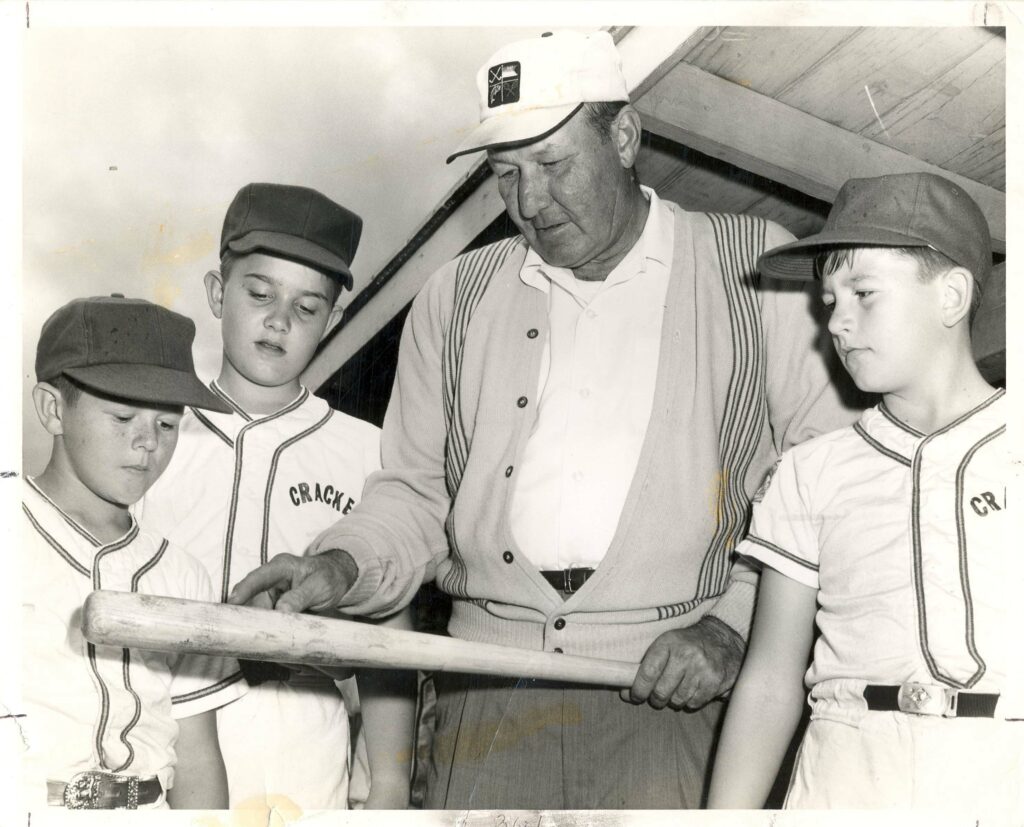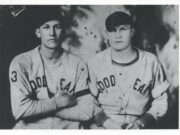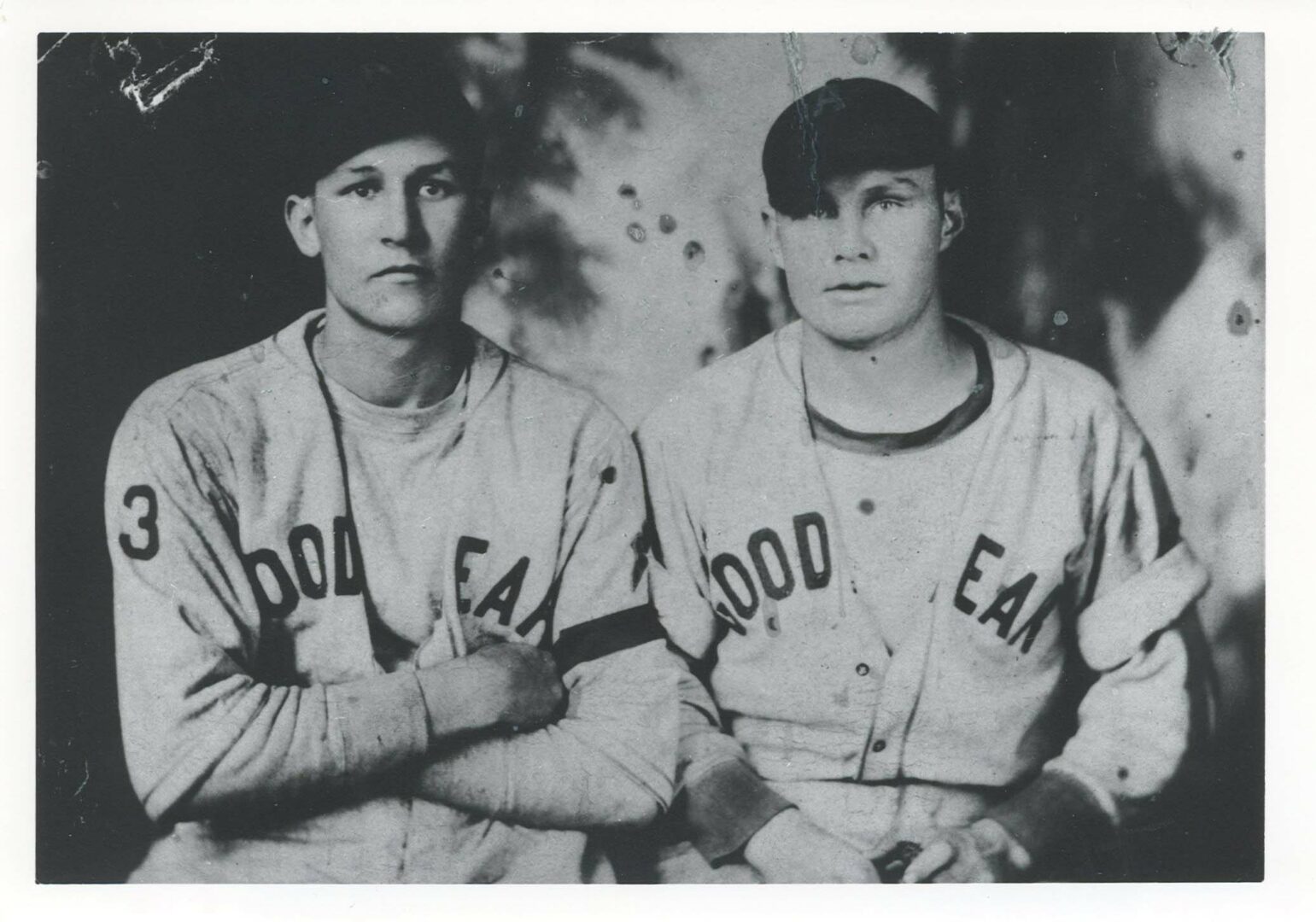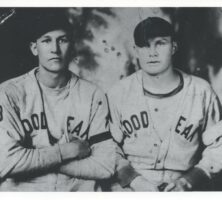Rudy York played major league baseball from 1937 to 1948 (with a brief appearance in late 1934). A seven-time all-star, York spent his most successful years as a first baseman with the Detroit Tigers. His most significant achievement, however, came while he was a rookie catcher in August 1937, when he broke Babe Ruth’s record for the most home runs in a single month.
Early Career
Preston Rudolph York was born on August 17, 1913, in Ragland, Alabama. His family moved to northwest Georgia when he was very young, settling in Atco, a mill town on the outskirts of Cartersville. As a teenager, York worked in the town’s mill and played on the company baseball team.

Photograph from Collection of Bartow History Center, Cartersville
After a brief stint with the Southern Association’s Knoxville Smokies, during which he saw little action, York was signed by the Detroit Tigers in 1933 at age nineteen. He advanced steadily through the Tigers’ minor league system, playing for teams in Shreveport, Louisiana (Class C Dixie League), as well as in Beaumont and Fort Worth, Texas (both Class A Texas League). York’s limited fielding abilities resulted in a number of position shifts during his time in the minor leagues. After playing second base, third base, catcher, left field, and right field, he finally settled in at first base while playing in 1935 for Beaumont, where he was named the league’s Most Valuable Player (MVP). He won his second consecutive MVP award while playing first base in Milwaukee, Wisconsin, with the Class AA American Association in 1936. (At that time, Class AA was the highest minor league classification.)
Major League Career
York made a brief appearance with the Tigers late in the 1934 season, getting just one hit in six at-bats. He didn’t return to the major league until 1937. He began that season as the Tigers’ third baseman, although after a slow start he was replaced by the veteran Marv Owen in early May. Optioned to AA Toledo, Ohio, in early June, York was immediately recalled when Owen suffered a broken hand. Although York’s hitting picked up in July, he was benched upon Owen’s return to the lineup later that month. Struggling to stay in the pennant race, the Tigers could not overlook York’s lack of fielding prowess at the “hot corner.”
Mickey Cochrane, the Tigers’ manager and everyday catcher, suffered a career-ending injury on May 25 in New York City, and on August 4 York replaced Birdie Tebbetts behind the plate. That month, York broke Babe Ruth’s major league record for most home runs in a single month. York’s record of 18 home runs would last until 1998, when Chicago Cubs player Sammy Sosa achieved 20 during the month of June. York finished his rookie year with 35 home runs, 103 runs batted in (RBIs), and a .307 batting average.
Most of York’s playing time in 1938 and 1939 was spent as catcher, but his poor fielding skills necessitated a position change in order to keep him in the batting lineup. In 1940 the Tigers convinced future National Baseball Hall of Fame inductee Hank Greenberg to move to left field so that York could become the full-time first baseman. York responded with 33 home runs, 134 RBIs, and a .316 batting average, helping the Tigers reach the World Series. York hit just .231 with one home run in the series, which the Tigers lost to the Cincinnati Reds.
York, one of the few major league stars not drafted into military service during World War II (1941-45), played first base for the Tigers through the 1945 season. His best season was 1943, when he led the league in home runs (34), RBIs (118), slugging percentage (.527), and total bases (301). He finished third in the 1943 MVP voting.
The Tigers won the 1945 American League pennant and the World Series, although York hit just .179 in the series. Traded to the Boston Red Sox prior to the 1946 season, he drove in 119 runs for his new team despite hitting just 17 home runs. His single best day in the majors came on July 27, 1946, when he hit two grand-slam home runs and drove in ten runs against the St. Louis Browns. The Red Sox won the American League pennant, and York won the first game of the World Series with a tenth-inning home run. He hit another home run in the third game, but the Red Sox dropped the series to the Cardinals.
York was traded to the Chicago White Sox in June 1947. For the season, he hit just .233 with 21 home runs and 91 RBIs. Released at the end of the season, he signed with the Philadelphia Athletics for the 1948 season but hit just .157 with no home runs in 51 at-bats. At the age of 35, his major league playing career was over. York had a reputation for enjoying the big-league lifestyle, sometimes to excess, and most observers—including York—believed those excesses shortened his career by several years.
York ended his professional playing career as one of the top sluggers of his time, finishing with 277 home runs, 1,152 RBIs, and a .275 batting average. From 1937 to 1947, no one in the American League hit more home runs or had more RBIs than York.
Later Career
Immediately after his major league playing days were over, York served as a player-manager for several minor league teams. Although he left baseball for a time in the mid-1950s to live and work as a firefighter in Cartersville, he was not yet finished with the sport. After working briefly as a scout for the Yankees, he joined the Memphis Chicks as a coach and later rejoined the Red Sox as a coach in 1959.

Photograph from Collection of Bartow History Center, Cartersville
After his dismissal by the Red Sox following the 1962 season, York moved back to Cartersville, where he spent the rest of his life. For most of that time, he was a self-employed house painter. York died of lung cancer on February 5, 1970, in Rome and was inducted into the Georgia Sports Hall of Fame in 1977.








